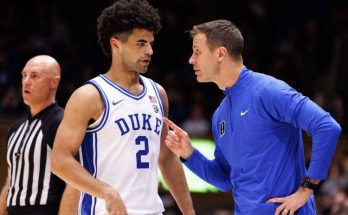The Green Bay Packers’ handling of Aaron Rodgers’ departure was nothing short of a masterclass in how *not* to manage a franchise quarterback transition. For all the talk about the Packers being a well-run organization, their inability to secure a viable trade partner for Rodgers—one of the greatest quarterbacks in NFL history—was a glaring failure. It wasn’t just a stumble; it was a full-blown faceplant. And the fallout from it exposed deep flaws in the team’s approach to roster management, player relations, and long-term planning.
Rodgers, for all his diva tendencies, wasn’t wrong about one thing: the Packers *did* fail him in key moments. They failed to surround him with enough offensive weapons in his later years. They failed to communicate clearly about their plans for Jordan Love. And when it came time to move on, they failed to extract real value in return for a quarterback who, even at 39 years old, was still capable of elite play. The fact that no legitimate trade partner emerged—outside of the desperate New York Jets, who had all the leverage—speaks volumes about how poorly Green Bay navigated the situation.
Let’s start with the obvious: Rodgers’ trade value *should* have been sky-high. Even with his age and occasional drama, he was coming off back-to-back MVP seasons in 2020 and 2021. He was still playing at a Hall of Fame level. Yet, when the Packers finally decided to move on, the market was shockingly thin. Why? Because Green Bay waited too long. They dragged their feet, waffled on commitments, and let Rodgers’ situation fester until his value plummeted. By the time they were ready to trade him, the rest of the league had either moved on at quarterback or wasn’t willing to pay the price the Packers wanted.
Compare this to how other teams have handled franchise QB transitions. The Colts got a first-round pick for Carson Wentz, a far inferior player. The Seahawks landed multiple high picks for Russell Wilson, even though he was coming off a down year. The Packers? They got a conditional second-rounder that barely scratched the surface of Rodgers’ worth. That’s not just bad negotiation—it’s organizational malpractice.
Part of the problem was Green Bay’s stubborn refusal to acknowledge the inevitable. For years, they clung to the idea that Rodgers would play forever, even as they drafted his replacement in Jordan Love. That lack of a clear plan created tension, and Rodgers—never one to shy away from voicing his displeasure—made sure everyone knew it. Instead of either fully committing to Rodgers or decisively moving on, the Packers lingered in purgatory, hoping the problem would resolve itself. It didn’t. And by the time they finally pulled the trigger on a trade, Rodgers’ relationship with the team was fractured beyond repair, and his market was diminished.
Then there’s the Jets factor. New York was the *only* team seriously in the mix for Rodgers, and they knew it. The Packers had no leverage. The Jets could lowball them, and Green Bay had to take it because there were no other realistic suitors. That’s how you end up with a laughably underwhelming return for a player of Rodgers’ caliber. If the Packers had acted sooner—if they had shopped him after his second MVP season, when his value was at its peak—they could have commanded multiple first-round picks. Instead, they got pennies on the dollar.
But let’s not pretend this is all on the front office. Rodgers himself played a role in this mess. His passive-aggressive media appearances, his offseason uncertainty, his refusal to commit one way or another—all of it contributed to the circus. Teams don’t like investing major assets in players who might retire on a whim or who bring unnecessary drama. Rodgers’ reputation as a high-maintenance star absolutely hurt his trade value.
Still, the Packers are the ones who look worse in all of this. They had control of the situation and botched it at nearly every turn. They misjudged Rodgers’ longevity, mishandled the Love selection, and then fumbled the trade process. Now, they’re left with a mediocre return and a fanbase rightfully questioning whether the front office has any clue how to navigate the post-Rodgers era.
In the end, the Packers’ failure to find a real trade partner for Rodgers wasn’t just about one player. It was about an organization that lost its way, got caught between eras, and paid the price for its indecision. And while Rodgers may have been a diva, the Packers were the ones who looked like amateurs.


